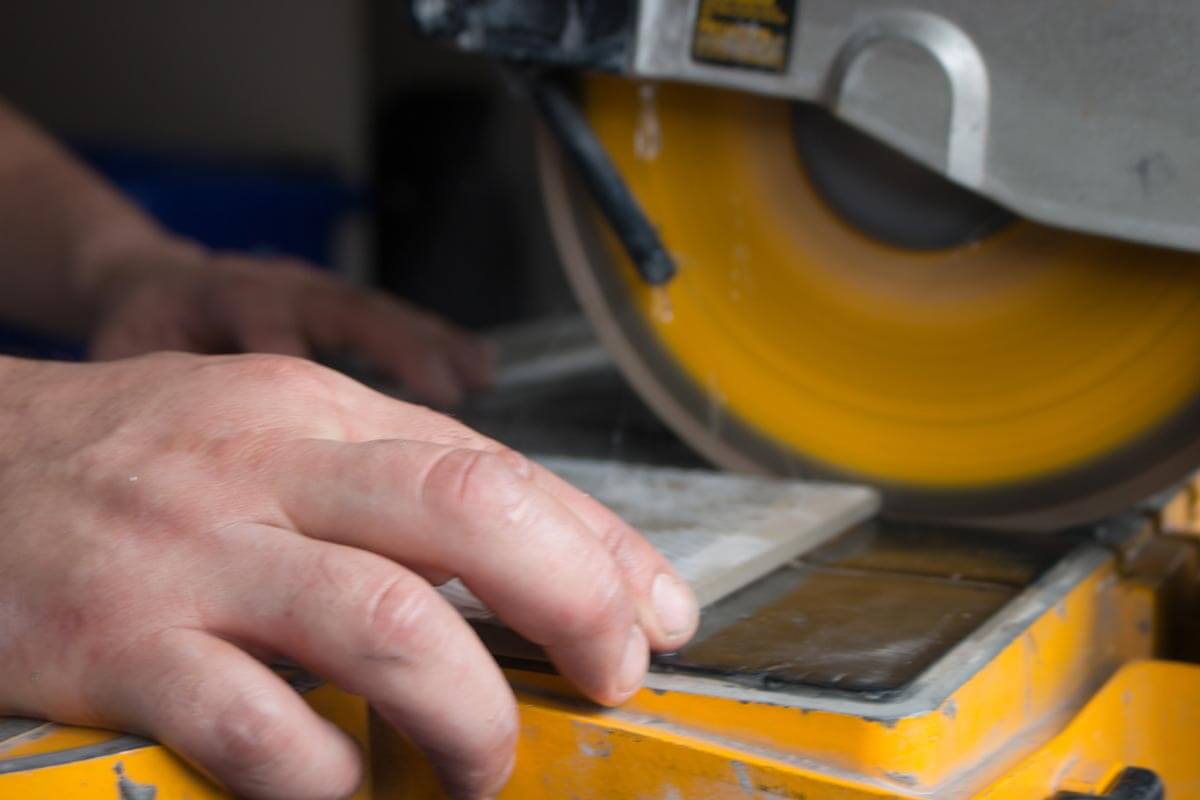
Installing Porcelain Tile
Tips & best practices
Installing porcelain tile can be a very rewarding project, increasing the resale value of your home!

Step 1: Make sure you have all of the tools and materials
Materials
- Tile
- Thinset mortar
- Cement backer board
- Cement board screws
- Grout
Tools
- Pencil
- Tape measure
- Level
- Speed square
- Notched trowel
- Rubber float
- Grout sponge
- Tile spacers
- Power drill
- Mixing paddle
- 5-gallon buckets
- Knee pads
- Safety glasses and earplugs
- Scoring cutter or wet saw
- Handsaw or jamb saw
Step 2: Prepare the Surface
Make sure you remove any old floor covering. The surface should be clean, smooth, and dry for optimal results. Repair, patch, and level any damaged or uneven areas. Double check to make sure the surface is architecturally sound and can support the weight of tile flooring.
Remove any moldings, trim, or appliances that may interfere with the installation, and check the door jambs to make sure that you have enough clearance for the tile to be laid beneath.
For an efficient tile laying experience, start by marking the center point of each of the walls in the room. Next, snap chalk lines between the center points of opposite walls to pinpoint the center of the room. The intersection of these lines should create perfect squares.
Starting at the center point, lay a row of loose tiles along the center lines in both directions, using tile spacers as you go to for even, uniform joints. Laying out the tile in advance helps to ensure a non-repeat look and can help to ensure that you have enough tile to complete your project before you begin. Once you reach the walls, you’ll most likely need to cut tiles for a proper fit. If the cuts needed are smaller than half of a tile, you can adjust the center line by snapping a new line a half-tile size closer to the wall. That will help to ensure that your design looks even and professional. If necessary, repeat this step along the intersecting center line.
For large rooms, you can make the job easier by dividing each section into smaller 2′ x 3′ grids by snapping additional lines parallel to the center-lines.

We recommend using a wet saw with a diamond tipped blade edge for optimal cutting results.
Step 3: Applying Adhesive
Always mix only enough of the adhesive to be used within 30 minutes, you don’t want the adhesive to begin to harden before you can get it applied. Using the flat side of the trowel (following the recommendations on the adhesive package), spread a 1/4″ coat on the surface of one grid area without covering the guidelines.
After doing so, hold the trowel at a 45-degree angle and use the notched side to comb adhesive into standing ridges. When you remove the excess adhesive, you leave behind a uniform, ridged setting bed for your tile. Do not spread a larger area of your adhesive than can be set in 15 minutes.
Step 4: Cuts
Start by marking any cuts with a pencil or felt-tip pen on the tile surface. You can use a tile cutter for straight or diagonal cuts. You can make curved cuts with a nipper, chipping away small pieces for best results.
For any full-length curved cuts, a rod saw may be used. After your cuts are made, smooth out any sharp edges with a carborundum stone to give a soft finish to the edge of your tile.
Step 5: Setting the Tile
Begin by installing tiles in the center of the room, one grid at a time, finishing each grid before moving to the next. This will help keep the installation balanced and uniform. Within each grid, it is best to start with the first tile in the corner and work outward.
Using a slight rotating motion, set tiles one at a time and avoid sliding them into place. Use caution not to hit the edges of the tile against each other. Be sure to either insert spacers as each tile is set or leave equal joints between tiles. Save the perimeter tiles in each grid for last, leaving an adequate gap between the tile and wall.
Once an individual grid is completely installed, tap in all tiles with a rubber mallet or hammer and wood block to ensure a solid bond and level surface. Remove excess adhesive from joints with a putty knife and from tile with a damp sponge to prevent an uneven appearance and to leave a clear space for grout.
Allow the tile to sit for at least 24 hours to set before walking on it.
Step 6: Grouting
After carefully reading and following all instructions and precautions on the grout package, make just enough to use in 30-minute increments, so it doesn’t dry before you can have it applied. As you remove the tile spacers and spread grout on the tile surface, use a rubber grout float or a squeegee to press it down into the joints.
Tilt the float at a 45-degree angle and with the edge of the float, remove the excess grout from the surface immediately. Do not allow time for the grout to dry. Next, tilt the float at a 90-degree angle and scrape it diagonally across the tiles.
Allow the grout to sit for approximately 15 to 20 minutes, then use a damp sponge to clean any residue from the surface and smooth the grout joints.
Make sure to rinse your sponge often and change the water as needed.
Polish with a soft cloth when the grout has dried and haze forms on the tile surface, then rinse again with a damp sponge and clean water if necessary. The newly grouted floor will need to cure for approximately 72 hours before any heavy use and at least three weeks before applying sealers or polishes.

We recommend allowing your grout to dry for up to 72 hours before any heavy use of the new flooring and make sure to use tile spacers!
